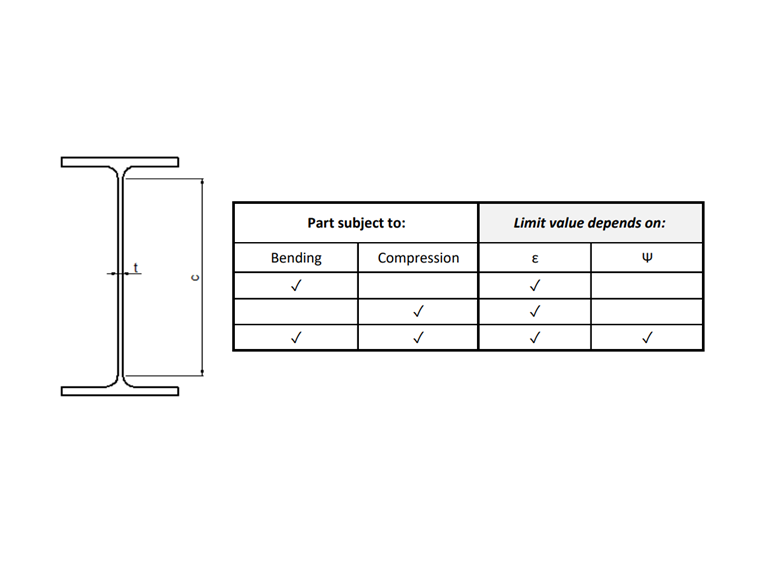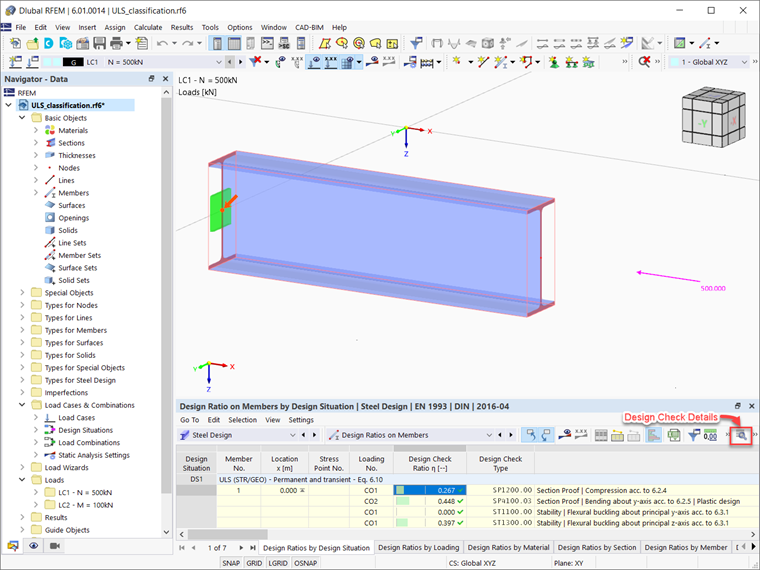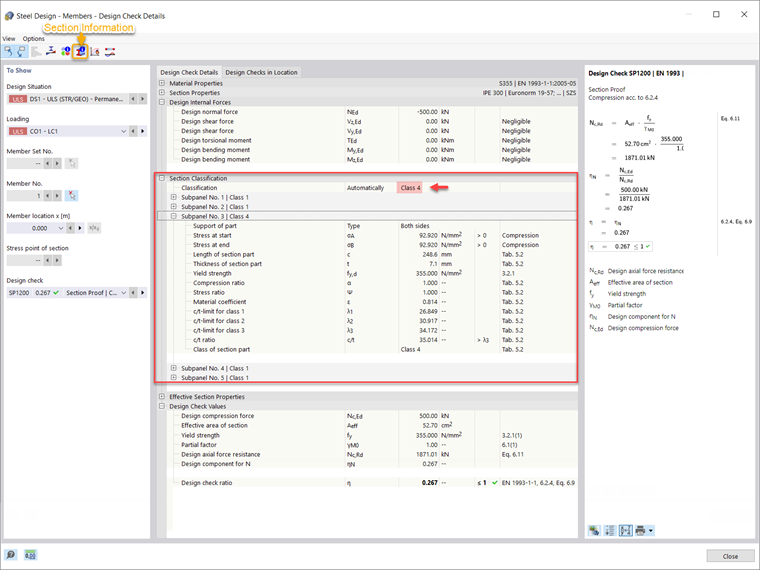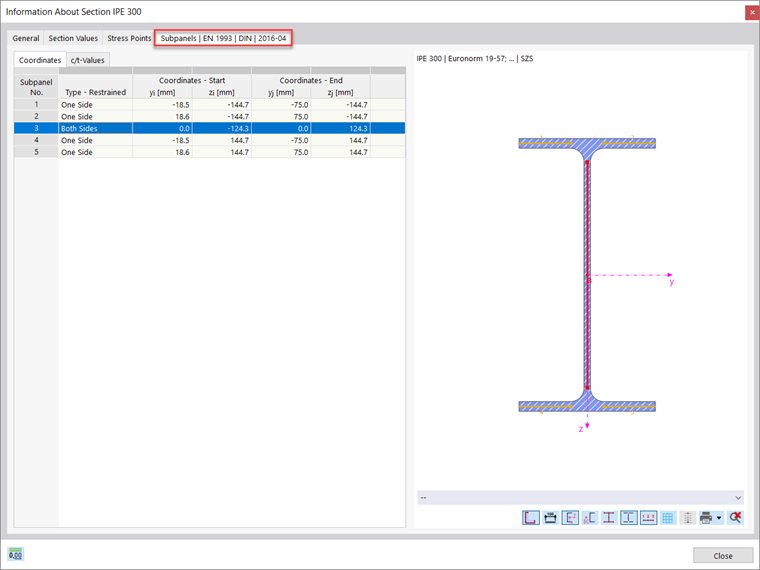EN 1993-1‑1 [1] defines the following four cross-section classes (also shown in Image 1):
- Class 1: Cross-sections that can form a plastic hinge with the rotation capacity required for plastic analysis without reduction of the resistance
- Class 2: Cross-sections that can develop plastic moment resistance, but have limited rotation capacity because of local buckling
- Class 3: Cross-sections in which the calculated stress in the extreme compression fiber of the member can reach its proof strength, but local buckling is liable to prevent development of the full plastic moment resistance
- Class 4 cross-sections are those in which local buckling will occur before the attainment of yield strength in one or more parts of the cross-section
The classification is done separately for all cross-section parts by comparing the provided width-to-thickness ratios to the limit values for each class as given by the standard. Thus, the class of each cross-section part is defined and the one with the least favorable value governs for the entire cross-section. The limit values depend on the following:
- Support condition of cross-section parts (on one or both sides)
- Yield strength of the steel used in the form of factor ε
- Stress curve in cross-section parts
- Magnitude of compressive strength
Eurocode 3 provides tables based on which the maximum width-to-thickness ratios for the cross-section parts can be calculated and compared to the limit values. For instance, the maximum width-to-thickness ratios to categorize an internal compression part as Class 3 are determined by the factors shown in Image 2.
The limit value for internal parts subjected solely to compression or bending is determined by factor ε, which is related to the yield strength of the steel. For parts subjected to both bending and compression, on the other hand, the stress distribution is detected by parameter α (plastic, Classes 1 and 2) or ψ (elastic, Class 3).
The former represents the percentage length of the compression stress in the cross-section part, while the latter represents the ratio of the boundary stresses (Image 3). Thus, in addition to factor ε, the limit value of the width-to-thickness ratios for parts subjected to bending and compression involves parameter α for Classes 1 and 2 and parameter ψ for Class 3.
Section Classification in RFEM 6
The Steel Design add-on offered in RFEM 6 for the design of steel structures performs a detailed cross-section classification on each design location before the design is carried out. The cross-section classification for each design check type is available in its associated design check details.
This is demonstrated for the beam shown in Image 4 (IPE 300, steel S355), for which the Steel Design add-on has been calculated and the results for each design type are already available. If, for instance, you display the design check details, you may notice that the cross-section classification is also provided in detail (Image 5).
As already explained, the classification is done separately for all cross-section parts (called subpanels in RFEM 6; five, in this case). Hence, different cross-section classes can be assigned to each subpanel, but the one with the least favorable value governs for the entire cross-section. In this manner, the cross-section of interest is classified as Class 4 for the section proof according to 6.2.4, which is the cross-section class of Subpanel 3.
Since Subpanel 3 is supported on both sides and is subjected to compression, its classification is done according to Table 5.2 from Eurocode 3 [1]. The yield strength of the steel is 355 N/mm² and therefore, the value of factor ε is 0.814 (Image 5). Based on this factor, the limit values of the width-to-thickness ratios for Classes 1, 2, and 3 are calculated (λ1, λ2, and λ3, respectively) according to the aforementioned table. Next, the c/t ratio is calculated on the basis of the length (c) and thickness (t) of the section part, and it is compared to the limit values for the cross-section classes. For this subpanel, the provided c/t ratio is larger than the one calculated for cross-section Class 3 and therefore, Class 4 is assigned to the subpanel.
Given that the other subpanels are classified as Class 1, this is the subpanel (for example, Subpanel 3) with the least favorable value that governs for the entire cross-section. On that account, the cross-section of interest is classified as Class 4 for the section proof according to 6.2.4.
To better understand the cross-section classification, you can display the individual subpanels of the cross-section in the Subpanels tab of the Section Information window (Image 6).
Final Remarks
The cross-section classification in RFEM 6 for the design of steel members is carried out according to the provisions in Eurocode 3 [1]. The classification is done separately for all cross-section parts by comparing the provided width-to-thickness ratios to the limit values for each class as given by the standard.
The limit values depend on the support condition of cross-section parts, yield strength of steel, stress curve in cross-section parts, and magnitude of compressive strength. Once calculated, the width-to-thickness ratio is compared to these and the class of each cross-section part is defined. Finally, the least favorable class obtained for the individual subpanels is assigned to the entire cross-section.





